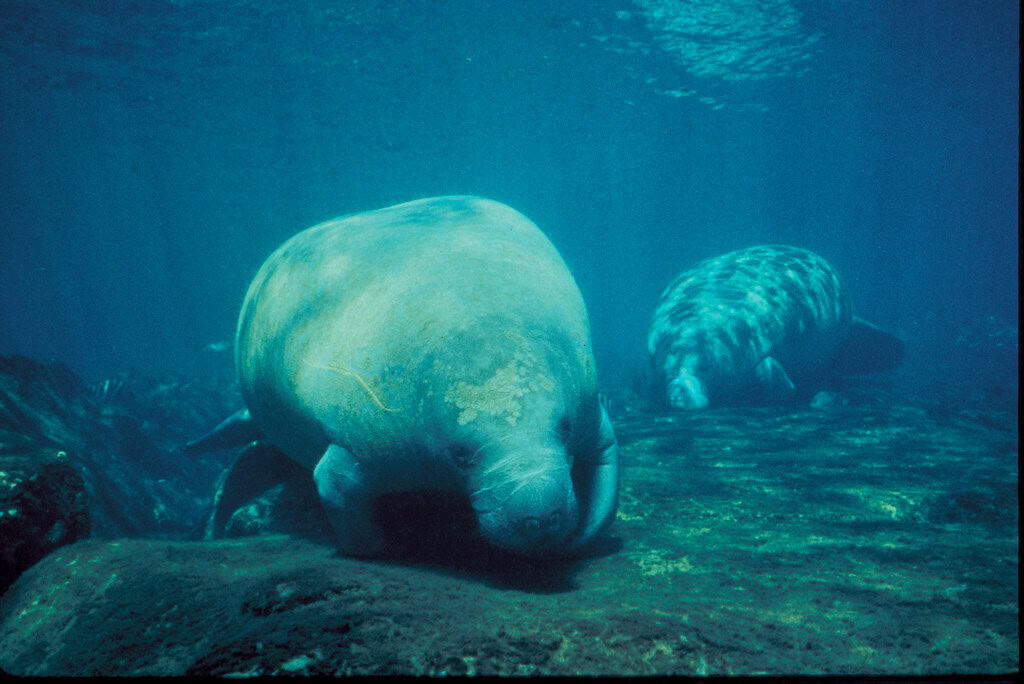In the warm coastal waters of Florida, the Caribbean, and parts of West Africa, gentle giants glide through the water with a slow, peaceful demeanor. These marine mammals, known scientifically as Trichechus, have earned the endearing nickname “sea cows” – a moniker that has persisted for centuries. But what exactly about these rotund aquatic creatures earned them this bovine comparison? The story behind this nickname reveals fascinating insights into manatee biology, behavior, and their historical relationship with humans. From their grazing habits to their docile nature, the sea cow nickname encapsulates much of what makes manatees such beloved and unique creatures in our oceans.
The Origin of the “Sea Cow” Nickname

The term “sea cow” dates back to the early explorers who encountered manatees during their voyages to the New World. When Christopher Columbus and other European sailors first observed these creatures in the 15th and 16th centuries, they noted their slow, methodical grazing on aquatic vegetation – reminiscent of cows grazing in meadows.
Historical records show that in 1493, Columbus himself mistook manatees for mermaids (though he noted they were “not as beautiful as depicted”), but subsequent explorers made the more apt comparison to cattle. The nickname became firmly established in maritime lore, and by the 18th century, “sea cow” was commonly used in naturalist texts and sailors’ accounts.
Grazing Behavior: The Primary Bovine Parallel

The most obvious similarity between manatees and terrestrial cows is their feeding behavior. Manatees are herbivores that spend up to 7 hours daily grazing on seagrasses, algae, and other aquatic vegetation. Using their flexible, prehensile upper lips, they gather plants with remarkable dexterity – much like how cows use their tongues to wrap around grass.
An adult manatee consumes approximately 10-15% of its body weight in vegetation daily, which translates to 100-200 pounds of plants for a 1,000-pound individual. This constant grazing helps maintain healthy aquatic ecosystems by preventing overgrowth of vegetation in their habitats, similar to how grazing cattle help maintain grassland ecosystems.
Physical Resemblance to Cattle

Beyond behavior, manatees share some physical characteristics with their terrestrial namesakes. Their large, rotund bodies with smooth, gray-brown skin give them a somewhat cow-like appearance, especially when viewed from certain angles. Adult manatees typically weigh between 800-1,200 pounds and reach lengths of 9-10 feet, proportions that contribute to their bovine comparison.
Their facial features, while distinct from cows, do include large, somewhat droopy snouts that can be reminiscent of cattle muzzles. Additionally, manatees have tiny eyes and wrinkled faces that some observers have likened to the weathered appearance of older cattle.
Digestive System Similarities

The internal biology of manatees further justifies their “sea cow” nickname. Like cows, manatees are hindgut fermenters with specialized digestive systems designed to process large amounts of plant material. They possess extraordinarily long intestines – measuring up to 150 feet in length – that allow for the slow breakdown of fibrous vegetation.
This compares to the complex four-chambered stomach of cows, which serves a similar purpose. Both animals host specialized gut bacteria that help break down cellulose, the tough plant fiber that’s indigestible to many other mammals. Their digestive efficiency is remarkable, with manatees able to extract nutrients from even the toughest seagrasses and aquatic plants.
The Gentle Giant Temperament
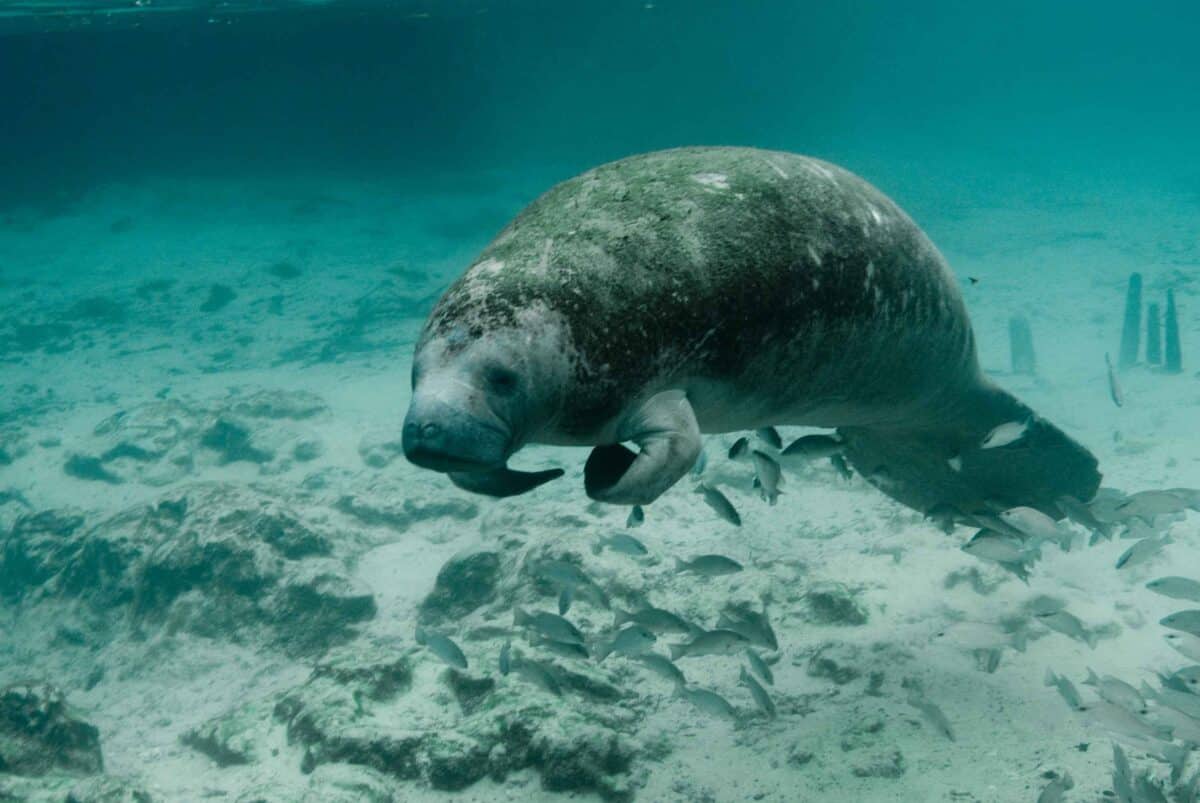
The docile, peaceful nature of manatees echoes the generally calm temperament associated with domestic cattle. Manatees are known for their gentle disposition – they have no natural predators (before human intervention) and thus never developed aggressive behaviors. They move slowly through the water at speeds of 3-5 miles per hour, though they can briefly accelerate to 15 mph when necessary.
This unhurried pace and lack of aggression parallel the typically placid nature of grazing cows. Manatees are also highly sociable creatures that often gather in small groups, particularly during cold weather or mating season, displaying social behaviors reminiscent of cattle herds.
Scientific Classification and Family Ties
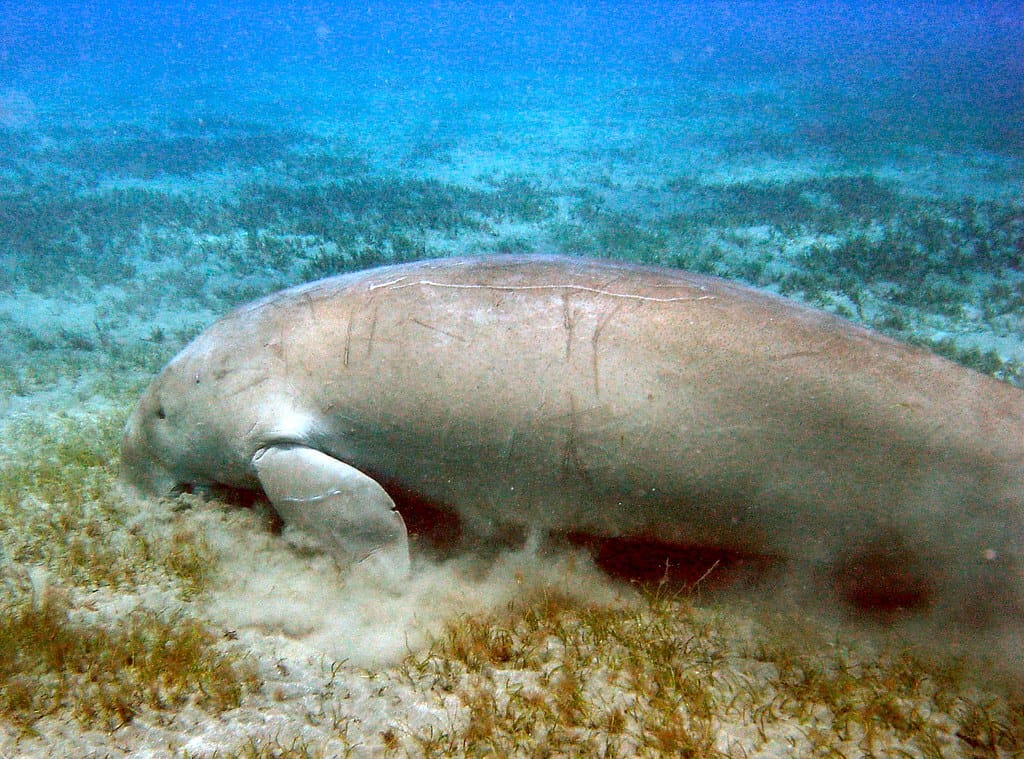
Interestingly, while manatees are nicknamed after cows, they aren’t closely related to bovines in the evolutionary tree. Manatees belong to the order Sirenia, along with their cousins the dugongs. Their closest living terrestrial relatives are actually elephants and hyraxes (small rabbit-sized mammals), with whom they share a common ancestor from about 50 million years ago.
This group, Paenungulata, has evolved along separate paths, with manatees adapting to fully aquatic lifestyles. The now-extinct Steller’s sea cow, which was hunted to extinction by 1768, was the largest sirenian at up to 30 feet long and belonged to the same order as manatees, further cementing the “sea cow” nomenclature across the entire group.
The Three Manatee Species
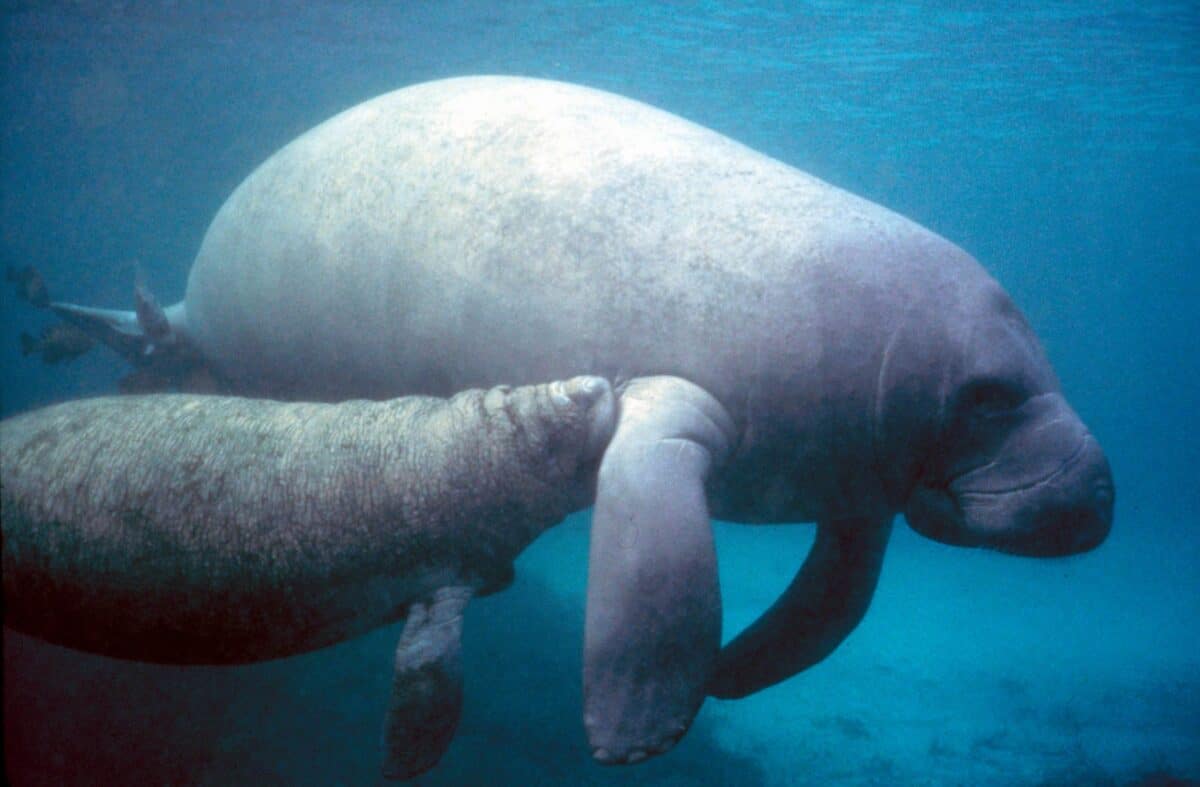
The sea cow nickname applies to all three extant species of manatees: the West Indian manatee (Trichechus manatus), the Amazonian manatee (Trichechus inunguis), and the African manatee (Trichechus senegalensis). The West Indian manatee, which includes the Florida and Antillean subspecies, is the most commonly known. The Amazonian manatee is unique as the only exclusively freshwater manatee species, living in the Amazon River basin.
The African manatee inhabits the coastal waters and rivers of western Africa. All three species share the grazing behaviors and physical characteristics that earned them the sea cow moniker, though they have adapted to their specific habitats with slight variations in size, coloration, and feeding preferences.
Historical Hunting as “Sea Beef”

The sea cow nickname took on a more literal and unfortunate meaning historically, as manatees were hunted for food by indigenous peoples and later by European colonizers. Manatee meat was described as tasting similar to beef or pork, earning it the name “sea beef” in some regions. This hunting practice continued into the 20th century, with manatee oil, hide, and bones also being harvested for various uses.
The Steller’s sea cow was driven to extinction primarily because of its meat, which could feed a crew for months. Today, hunting manatees is illegal in most countries, but poaching remains a threat in some areas. This history of exploitation further cements the cow comparison – as both animals were valued as sources of meat and other products.
Conservation Status and Threats
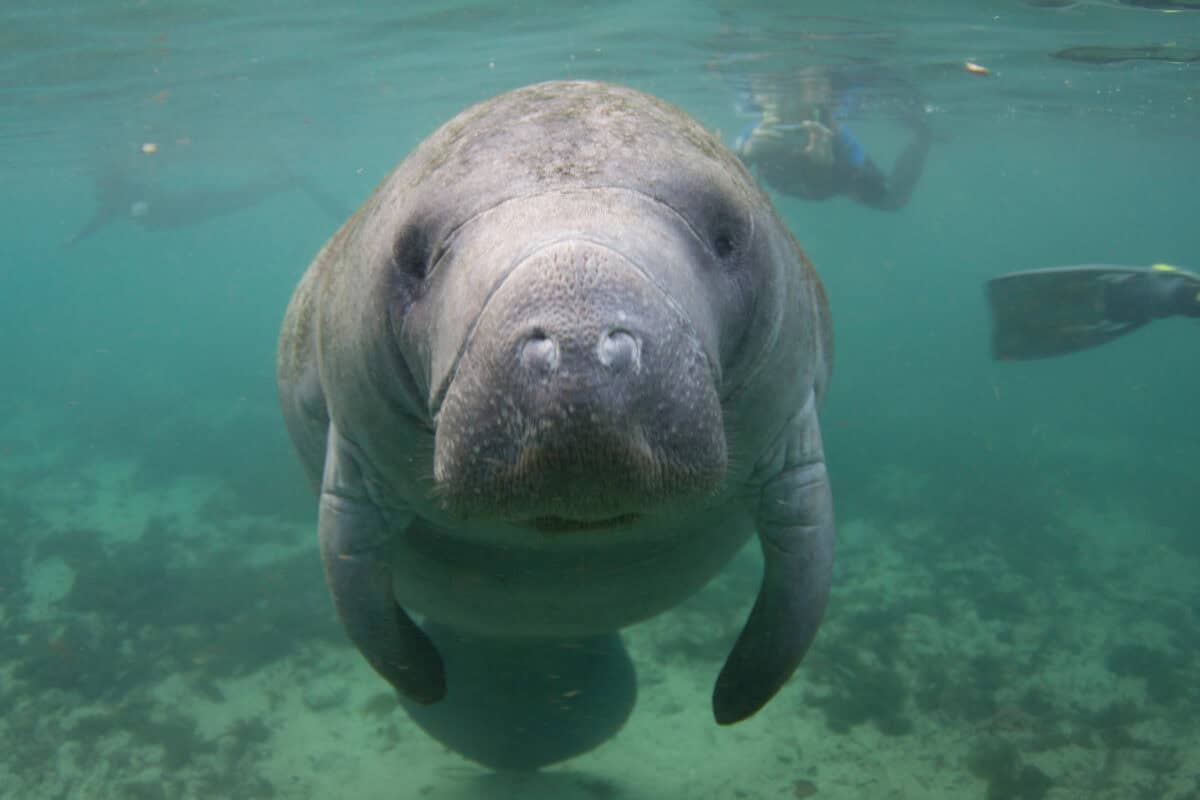
Unlike domesticated cattle, which number in the billions worldwide, manatees face significant conservation challenges. All three manatee species are listed as vulnerable or endangered on the IUCN Red List. The Florida manatee population has recovered somewhat in recent decades, growing from a few hundred in the 1970s to approximately 6,300 individuals today, thanks to conservation efforts.
However, they continue to face threats from boat collisions, habitat loss, pollution, and climate change. Particularly concerning is the recent mass die-off of Florida manatees, with over 1,000 deaths in 2021 alone – many due to starvation resulting from seagrass depletion. These sea cows, unlike their terrestrial counterparts, don’t have the luxury of human care and feeding when their natural food sources become scarce.
Cultural Significance of the Sea Cow

The “sea cow” nickname has permeated cultural representations of manatees around the world. In Florida, where the West Indian manatee is an iconic species, the sea cow has become a beloved symbol featured in tourism, conservation campaigns, and local artwork. Manatees frequently appear as gentle characters in children’s books and educational materials, often portrayed with their sea cow nickname prominently featured.
Indigenous cultures in the Americas and Africa have their own names and legends surrounding manatees, many of which reference their cow-like qualities. The Seminole and Creek tribes called the manatee “PezBúfalo” or water buffalo, while some African cultures viewed them as sacred creatures. This cultural significance helps raise awareness for manatee conservation while perpetuating their bovine nickname.
Modern Encounters with Sea Cows

Today, encountering these gentle sea cows has become a popular ecotourism activity in places like Crystal River, Florida, where people can responsibly swim with wild manatees under strict guidelines. These encounters allow visitors to observe firsthand the placid, cow-like demeanor that inspired their nickname. During winter months, hundreds of manatees gather in the warm waters of Florida’s springs, creating spectacular aggregations that draw thousands of visitors.
Viewing platforms and boardwalks allow for responsible observation of these marine mammals. Education centers throughout manatee habitats highlight the “sea cow” nickname while teaching visitors about manatee biology, behavior, and conservation needs. These educational opportunities help transform the sea cow from a simple nickname into a gateway for public engagement with marine conservation.
Conclusion: The Enduring Legacy of the Sea Cow Nickname
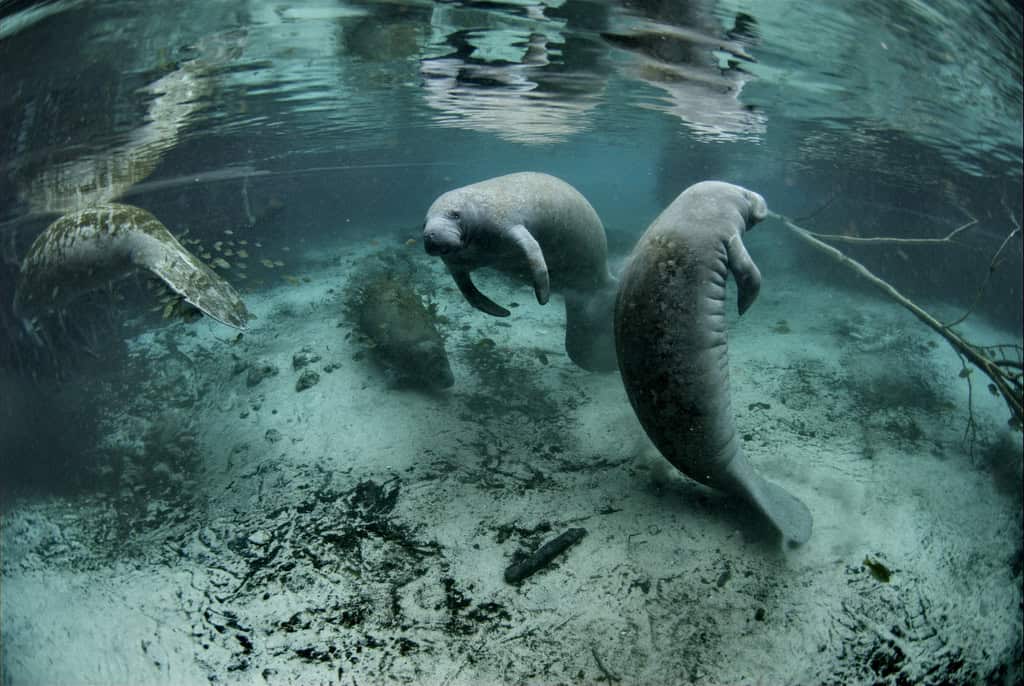
The “sea cow” nickname has endured for centuries because it aptly captures the essence of these remarkable marine mammals. From their grazing habits and digestive systems to their gentle demeanor and rotund physiques, manatees genuinely embody many qualities we associate with cattle. This nickname serves as more than just a cute moniker – it provides an accessible entry point for understanding manatee biology and behavior through comparison to a familiar terrestrial animal.
As conservation efforts continue to protect these vulnerable creatures, the sea cow nickname helps foster public affection and concern for their welfare. In the end, whether we call them manatees or sea cows, these gentle giants remain one of nature’s most endearing creations, worthy of our protection and admiration.
- Why Pandas Were Once Nearly Extinct—and How China Saved Them - August 9, 2025
- This Fish Has the Most Teeth in the Ocean—And Uses Them Well - August 9, 2025
- How Wolves Use Group Howls to Reunite With Pups - August 9, 2025

